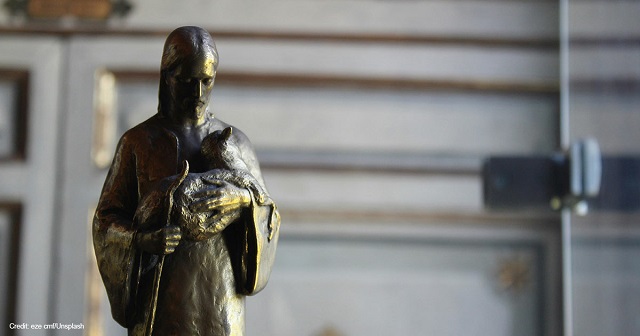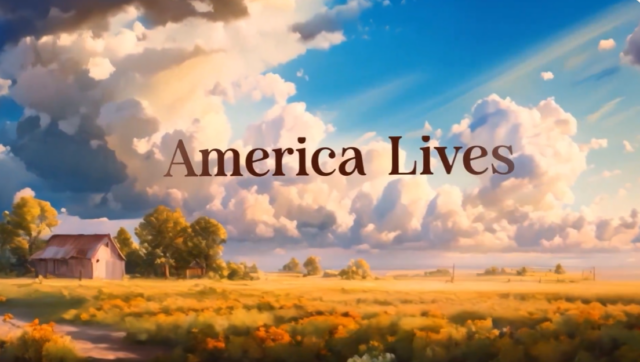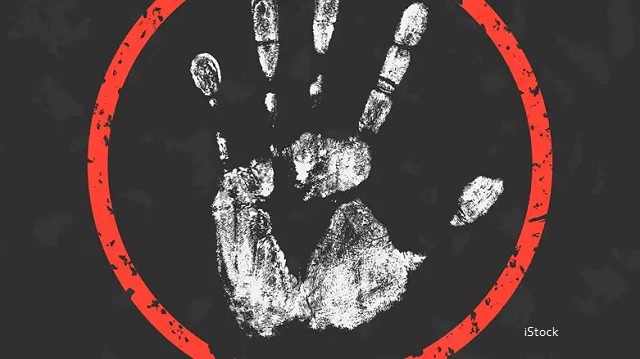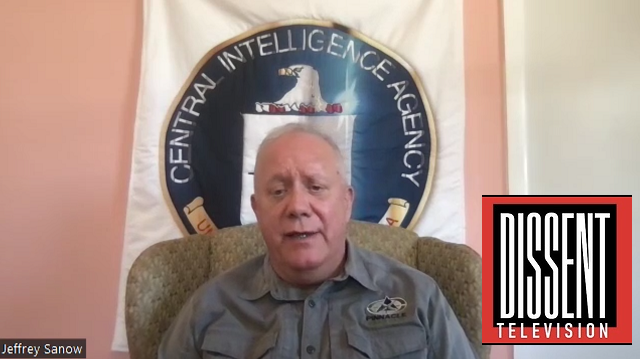
Tom Holland’s Dominion: How the Christian Revolution Remade the World has become an important apologia for Christianity in our times. Four years after publication, the book, whose author is sympathetic to Christianity but not exactly a Christian, continues to help Christian and non-Christian Westerners appreciate the biblical roots of their civilisation. It even recently helped prominent atheist Ayaan Hirsi Ali convert to Christianity. Holland’s history is not perfect, but it is worth reading for anyone concerned about the future of our society.
Western civilisation is inescapably Christian
The thesis of Dominion, like that of Christopher Dawson’s Progress and Religion, is that the Enlightenment’s account of “progress” is a myth. Everything on which modern Westerners pride themselves — the separation of politics from religion, respect for the dignity of each human being, and a zeal to eradicate injustice — traces its origins not to secular reason and science, but to the Christian faith.
The concept of human rights started not in revolutionary politics but in the canon law of the medieval Catholic Church — a law rooted in the belief that man is made in God’s image and that God took on human flesh in Jesus. European Christians enslaved non-Europeans, but their worship of the God-man who let himself be crucified, stung their consciences so much, or so inspired those they oppressed to revolt, that slavery and colonialism eventually died out. It was also Christianity, not 1960s feminism, that elevated women’s status in society and marriage, through the veneration of women saints like Macrina of Cappadocia, Catherine of Siena, and Mary the Mother of Jesus.
Even apparently anti-Christian Western movements are inescapably Christian. Secularism would not have been possible unless Jesus had distinguished “the things of God” from “the things of Caesar.” Disbelief in the miraculous began with Christian wonder at the wisdom of nature as God created it: why look for extraordinary interventions of God on earth when creation itself is miraculous enough? Progressivism’s zeal for social reform began in the Protestant Reformation, which itself continued the medieval clerical reform movements that were begun by Pope Gregory VII.
Along the way, Holland brings to life figures of Christian history that might seem interesting only to academics: the Donatists, Pelagius, Martin of Tours, Pope Gregory the Great, and Elizabeth of Hungary all appear from a fresh, gripping perspective. Holland also tries to be scrupulously fair to all sides of the events he recounts, as in the complicated story of Galileo: as Holland recalls, the Italian scientist’s condemnation by the Church had less to do with clerical dogmatism than with his tendency to insult others — even his highest-placed defender, the pope — and promote himself.
Law versus Love?
But some of Holland’s arguments will not sit well with orthodox Christians.
For one, he shows a deficient understanding of traditional Christian views on same-sex “marriage” and transgenderism. Holland says these stances cling to a pre-Christian notion of moral law that does not take seriously Christianity’s message of love. He traces this alleged contradiction back to St Paul, who, while he preached God’s love for all human beings, laid down absolute moral prohibitions on same-sex sexual activity.
But as Christians like Pope Benedict XVI have pointed out, there can be no love without truth. Jesus forgave sinners, but he also told them to “go and sin no more.” Behaviours that arise from disordered desires — like greed, lust, or rage — harm both those who perform them and those on whom they are performed. We do not love others if we encourage them to persist in self-destructive behaviour.
Besides, Christians condemn behaviours, not persons. Some deny that it is possible to condemn an action without condemning the actor, but then one would have to deny that the person transcends his acts. That, in turn, would lead us to deny his free will and therefore his responsibility for his actions.
If Holland better grasped the Christian understanding of human sexuality, perhaps he would have been more circumspect in describing sexual sins. It is not that he delights in unchastity; indeed, he rightly points out that a culture of sexual license helps the powerful abuse the weak. Moreover, he praises Christianity for having done away with pagan Rome’s culture of sexual exploitation; and he attributes the return of that culture, as witnessed by the #MeToo movement, to Christianity’s decline. Nevertheless, Holland’s descriptions of that culture at times get unnecessarily graphic, especially the discussions of Harvey Weinstein, Donald Trump, and ancient Rome.
Christianity without Truth?
Perhaps Holland’s weak understanding of the connection between love and absolute moral truths also explains his suggestion, at the end of the book, that the “truth” of Christianity has more to do with its message than its historicity. Recognising the strength of Nietzsche’s point that, if Christianity is false, then Western values are a sham, Holland counters that “a myth… is not a lie” but “can be true.” He says Christianity’s value lies more in its “audacity” to believe that God became man and suffered a horrible death; this belief, he suggests, is what sustains Christianity’s moral energy, regardless of its objective truth.
But if this is Holland’s view, St Paul refutes him better than Nietzsche ever did:
If Christ has not been raised, then our preaching is in vain and your faith is in vain; … [because] you are still in your sins, … [and] those … who have fallen asleep in Christ have perished. If in Christ we have hope in this life only, we are of all people most to be pitied. … If the dead are not raised, “Let us eat and drink, for tomorrow we die.”
It is well and good to pursue justice. But in this world, all die, even the righteous, and sometimes they suffer more than anyone. Unless we knew that beyond death was an eternal reward that far outweighed the sufferings of this life, why would we be willing to endure death and not live only for the pleasures of the moment?
The Gospel of Grace
Also problematic is Holland’s argument that Christian values are “culturally highly specific” and “were never really self-evident truths,” as the Declaration of Independence claimed about human rights and equality.
If that is true, how did non-Christian cultures like India and the Ottoman Empire adopt understandings of religion, secularity, and the immorality of slavery that started in Christianity, as Holland himself recounts? Could it be that Christianity, rather than creating these notions out of whole cloth, helped to awaken non-Christians’ latent awareness of them?
If not, one might credit the view that people of historically Christian cultures cannot reason with people of historically non-Christian cultures until the latter convert. Some might even use this as an excuse to “force” conversion (as though that were possible) — whether to traditional, explicit Christianity or to progressives’ implicit Christianity of secular human rights — as a necessary step in spreading civilisation.
In the orthodox Christian telling, by contrast, although man cannot know the mystery of God’s inner life without revelation, his conscience has never lost knowledge of moral truth. But conscience can become confused if the will rebels against truth, implanting in man the alien law of sin that wars against his nature’s original moral law. The grace of the Holy Spirit, which Jesus won by his suffering and death, overcomes the law of sin, pulling up its roots and righting the nature it has twisted (although not perfectly until the general Resurrection). Thus, grace lets the light of conscience shine clearly again, but it does not impart brand-new moral knowledge; it revives knowledge man already has.
On one hand, the need for grace makes knowledge of the moral law more difficult than Holland optimistically supposes. He thinks that Christian values show no signs of going away anytime soon, even in the post-Christian West. But perhaps those values have hung on only because most living Westerners — probably the baby boomers, and perhaps even their children, the millennials — have still been baptised into grace. Although many may not be responding to grace, at least they have its imprint on their souls. But as millennials stop baptising their children, and a new generation grows up without any direct knowledge of grace, what then?
In another sense, however, we can have more hope than Holland suggests. For if everyone, even those without the grace of baptism, knows the moral law, then perhaps the indirect influence of grace, through the attractiveness of Christian charity, might be enough to help non-Christians recognise that law in their consciences.
After all, that is how ancient Christians won over their fellow citizens, as Holland relates, by the example of their love for one another. But that means that practising Christians need to respond better to their baptismal grace, and work and pray harder to evangelise, or re-evangelise, their fellow citizens.
That Holland overlooks the role of grace in Christian history is surprising, because St Paul, whom he takes to be the origin of Christianity, speaks constantly about the centrality of grace to the Gospel. But perhaps we should not be surprised, because to treat Paul as the creator of Christianity is to misunderstand Paul deeply.
Paul believed Christianity to consist not in human words of wisdom, but in the Word Incarnate: “Christ crucified.” The Church’s proposal to the world is not a program for change, a set of principles, or a set of ideas (though it includes these), but a person — Jesus, Immanuel, God-with-us — who took on our sinful flesh and recreated it in the baptism of his suffering, death, and resurrection.
Strength in unity
Criticisms aside, Holland gives all modern Westerners — Christians or not — much to think about.
Especially helpful is his book’s suggestion that the conflicts within contemporary Western civilisation — truth versus love, law versus spirit — are between strands of Christianity that, as past experience shows, once existed in harmony. Together they gave life to a great civilisation; apart, each has become exaggerated and destructive.
Zeal for moral reform eradicated corruption in the institutional Church; but when its partisans abandoned the traditional Christian community, they set up brutal political dystopias — whether the Radical Anabaptists’ Kingdom of Muenster or Revolutionary France. Devotion to man’s freedom and dignity ended slavery and racism, but it devolved into moral anarchy when it was separated from reverence for man’s transcendent end. If these strands were reunited, they might balance each other and commence a new springtime of Western civilisation.
Holland’s account also raises the question of whether the rupture of the different elements of Christian civilisation had something to do with divisions within the Church proper. Holland praises Pope Gregory VII for distinguishing the realm of the state from that of the Church, and for holding public institutions to universal moral standards.
But he also notes that Gregory’s zeal could be excessive, and eventually led to the medieval papacy’s claim (which numerous leading fathers of the Church had condemned centuries earlier) that it was good for civil authorities to prosecute heresy at the Church’s direction.
Was Gregory more prone to such excesses because he was one of the first popes not to reign in formal communion with the Eastern patriarchal bishops, who had separated from Rome just twenty years before his pontificate? Had the medieval popes had to keep more in mind the authority and judgments of their Greek-speaking brethren, they might have asserted their own authority with more caution.
Moreover, had the East, with its instinctive reverence for God’s transcendent authority over men’s lives, remained in communion with the West, the West’s confidence in reason might not have rushed so quickly into secularism, nor its love of human dignity and freedom devolved into today’s identity politics and moral anarchy.
On the other hand, if Eastern Christianity had remained anchored to the papacy, it might have been able to defend itself from the Byzantine and Russian emperors who turned the Church into an arm of the state. This “caesaropapism” — the inverse of papal theocracy — persists to this day in parts of Eastern Europe, sapping the Church of evangelical energy and leading it to acquiesce in the reigning autocrat’s policies, no matter how brutal.
These are just some of the important questions that Holland’s history raises for contemporary Westerners, be they Christian or not. We would do well to consider all the insights he has to offer.
AUTHOR
John Doherty is a member of the staff of The Witherspoon Institute. This article has been republished with permission from The Public Discourse.
EDITORS NOTE: This Mercator column is republished with permission. All rights reserved.















